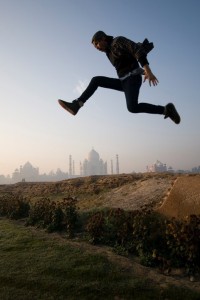
Just a few days ago, challenged by the 13 hours’ time difference, I made a call to the antipodes, probably inspired by the same curiosity driving HOPE’s photographers, and had a conversation with Brandon. Here are bits of it.
How have you come up with the idea of HOPE? Are you a ‘humans of’ photographer yourself?
I am a photographer, but not a professional one. I do take photos now and then here in Melbourne, but I mostly do when travelling.
Are you planning to expand the project or keep it online?
Well, this is one of those projects that, when you just wake up in the morning you wouldn’t imagine you are going to do. And then it just happens and keeps changing and growing. In the future, if we have enough followers we could either do a book, which every photographer would contribute to, and which would obviously be copyrights restricted, or potentially an exhibition, in a few major cities around the world; but it really depends on how it goes. I think that potentially it would also be good to do a documentary. We have got people in Jerusalem, and now we are getting a photographer from Palestine to come on board. In a way, it is somewhat cheesy, but it could be a valuable platform for different countries to express what you don’t normally see in the medias, often promoting negative attitudes. I think that we can show real people, and let these people have their say, and I believe that it is a really awesome thing.
Yes, I agree. I had the luck to meet the creator of Humans of London city and I see how he approaches people.
Yes, that’s great, that’s the main thing. I think we are not about mere photography. Our collective is about being empathetic, approaching people with respect, not taking photos if they do not want them being taken. We are not about exploiting people. We are really concerned about approaching them in a nice, respectful way.
The part I like the most is actually the dialogue that takes place even before asking to take the picture. The part when the photographer gets to know the person. I can see from the pictures you’ve taken that they’re not just mere, plain pictures.
Yes, for me there are some photos that are technically beautiful; then, there are others which can be good but you can actually see that the photographer formed a relationship with the person that is genuine and the camera doesn’t really become an issue anymore. It’s like person to person.
True. I have also heard that there will be some sub-projects within the project, like common weekly topics or questions, given to the photographers around the world. Could you tell more about it?
Sure. This is actually what makes the project a little bit different. What we are trying to do is to ask similar things at a given time in different places, so we can get a view from London, Paris or Buenos Aires and compare different perspectives. The plan is to do three themes a month. We are going to explore a lot of different subjects, some serious, like ‘what does it mean to you when I say the word god’. Others could be something as random as ‘talking with people with green t-shirts on’. We actually still want to maintain that spontaneous phenomenon that all those ‘humans of’ pages are full of. You don’t want to be reading about the same question all the time. That is why we will have, once in a while, a week just devoted to random stories. One of the most beautiful things is when you approach someone and you never know which kind of wisdom, story or experience he’s going share with you.
Yes, sometimes you want to let the subject just talk. We recognize that just asking a set question is not the best approach. But at the same time we recognize that it is an approach that HOPE has an advantage to do, because we have so many people that it would seem like a waste of opportunity if we didn’t explore questions around the world at any given day, week, month.
Would you ever imagine to ask more political questions?
We want to try to depoliticize the whole group and just concentrate on individuals. But obviously political matters affect people’s lives a lot. For instance, say if some global events happened, a revolution in a country or something like a tsunami in Japan, then it would be worth touching on those issues and share wishes and messages of hope from and to people affected by natural disasters. These things are definitely on our mind but we just want to make sure that we are not an organization which is just a revolutionary, political-minded group. We want to be a mirror to the world, not a service that has an agenda.
Why 100 locations and 100 stories?
When HOPE first came to mind I thought: ‘how can I get photographers on board?’. That’s why I had to put it in a way which has defined ideas, defined goals. Because if you just approach random people and present a vague idea, without a specific mission, it is hard for people to get behind that idea and really believe in it. Also, there are a lot of social projects around the world so you need a sort of tag line, you need to limit a project in a way that makes it more interesting for its fans. That’s why I thought that 100 photographers and 100 locations has enough of geographic all-inclusiveness that really offers a social commentary that is worth following.